Get rid of Thrips on houseplants. Learn how to identify and kill Thrips. Keep them gone with proper plant management techniques. This post has information on Thrips and methods of Thrip eradication on houseplants.
Thrips are a sucking pest like aphids, mealy bugs and spider mites. The leaf damage from these sucking pests is often confusingly similar.
Thrips are poor flyers so they are often seen right on the plant. They have mouth parts that both punch holes in the leaves and suck out the leaf juices. So look for the holes in the leaves.
They do NOT produce or live in webs. If you see webs, suspect spider mite damage.
Thrips on houseplants:
Thrips entire lifecycle is finished on the plant host. Look for eggs and all the life stages of Thrips on the leaf surface.
Thrips do not reproduce through the soil.
In your home, If you have bugs in your houseplant soil it is probably fungus gnats. Here’s how to kill fungus gnats.
What do Thrips look like?
Like aphids , mealybugs and spider mites, thrips are easy to miss until the infection is severe and difficult to eliminate.
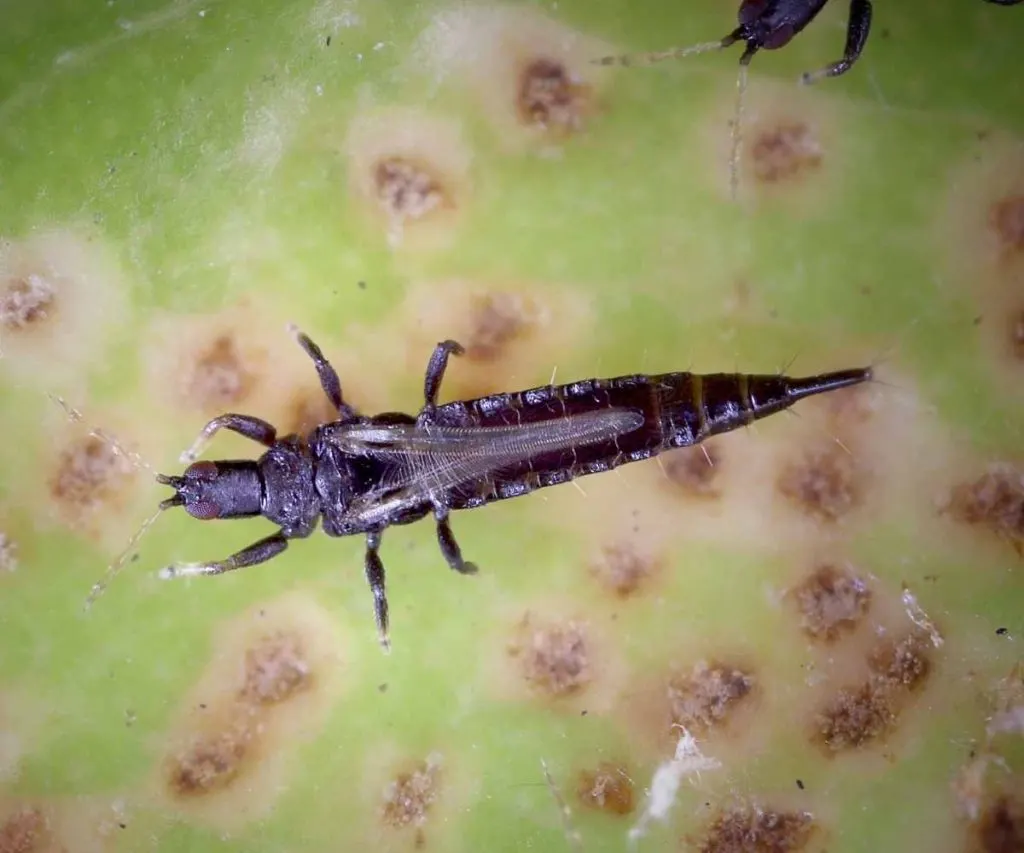
Thrips belong to the order Thysanoptera there are Over 6,000 species of Thrips. The Winged varieties have long narrow bodies with fringed wings.
They may be black, brown or yellow bugs. Thrips get around by the clap and fling method. So you will see them move about the plant but they will stay close to it.
I found a cluster of Thrips Eggs on my Philodendron Birkin leaf. Then I noticed the tiny black bugs on the plant. At first I thought the bugs were fungus gnats.
After a close look I realized the black Thrips on my plant were narrow and longer than gnats. But it is easy to confuse the two at first glance.
If you see damage to your houseplants leaves it may be Thrips. Learn the signs.
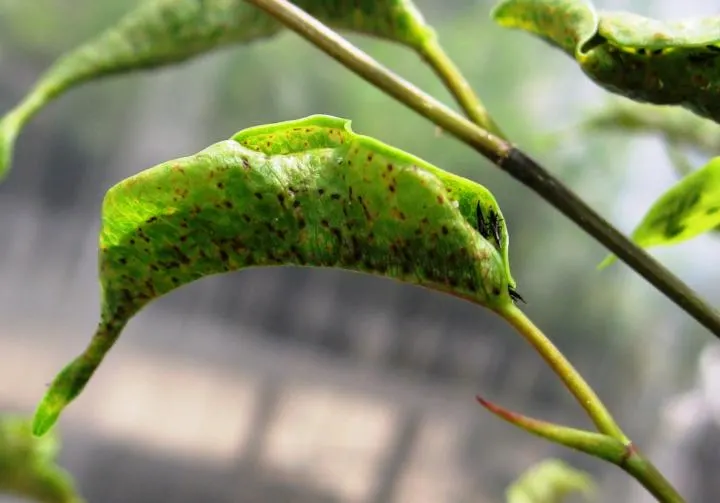
Thrip Damage:
Thrips make brown spots on leaves as they punch through the leaf surface to suck out the juices.They leave silvery trails and dried spots on plant edges or anywhere on the leaf as the plant cells dry out.
Thrips are vectors of fungal and bacteria plant diseases. As they move from plant to plant they take pathogens with them. The Thrips move the diseases and spread them. If you see viral or bacterial diseases look for Thrips.
Thrips also leave unsightly fecal spots on the plant leaves.
Distorted leaves or stem surfaces happen when Thrips are piercing the surface and laying eggs under it.
When you see pests on your houseplants act quickly! If you are dealing with Thrips quick action will help contain the plant damage.
Thrips Life Cycle:
As adults, thrips are tiny flying (sort of) bugs with small transparent wings. However they go through many different forms their short lifespan. At one time you will have all of these life stages in your houseplants.
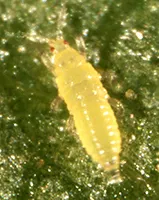
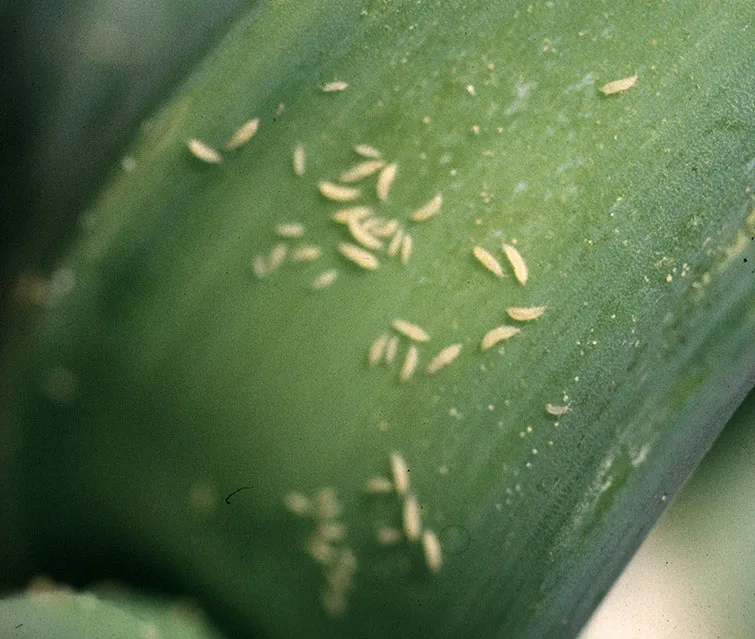
Thrips do not breed in the soil. If you see bugs in your soil flying about or in larval form in the soil they are probably fungus gnats.
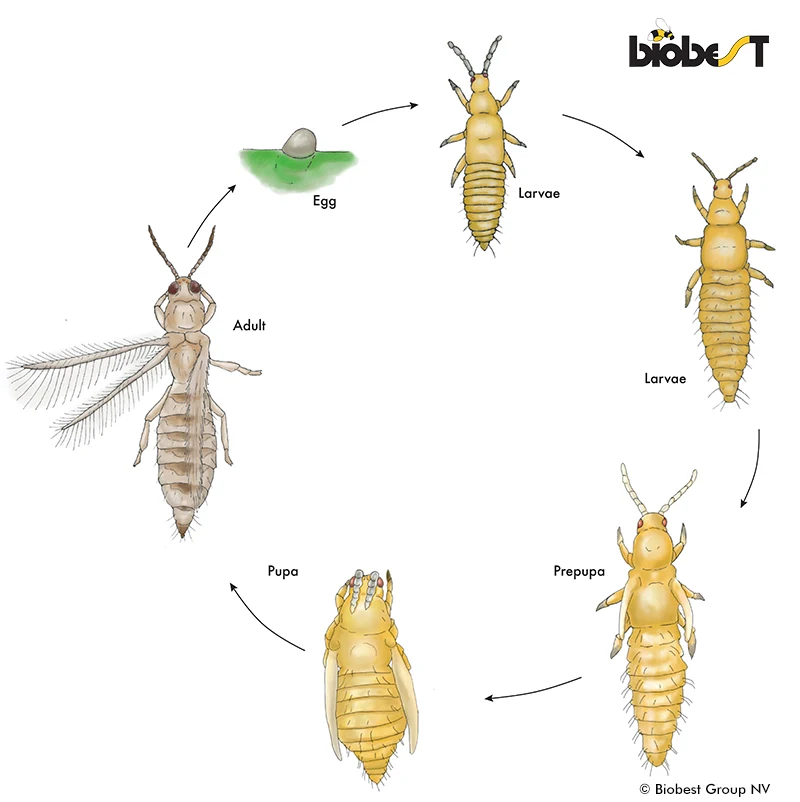
The lifecycle of Thrips is completed in a month. However, in warm weather the entire lifecycle from egg to adult can complete in less than 16 days! Expect to be actively involved in Thrip management at least twice that long.
Thrips can make up to 12 to 15 generations per year. With their fast reproduction this means you can miss them for a few weeks and have quite a population to deal with in very little time.
Outdoors Adults and pupae thrips overwinter in the soil. In spring, females insert eggs into the tissues of flowers, leaves or stems—each female can produce up to 80 eggs.
The eggs hatch into wingless larvae (nymphs), which feed on plant sap. They then go through two or more nymphal stages before becoming adults.
You may see several stages of the Thrips lifecycle at once on your houseplants. Look for the adults, the eggs and also the nymph forms.
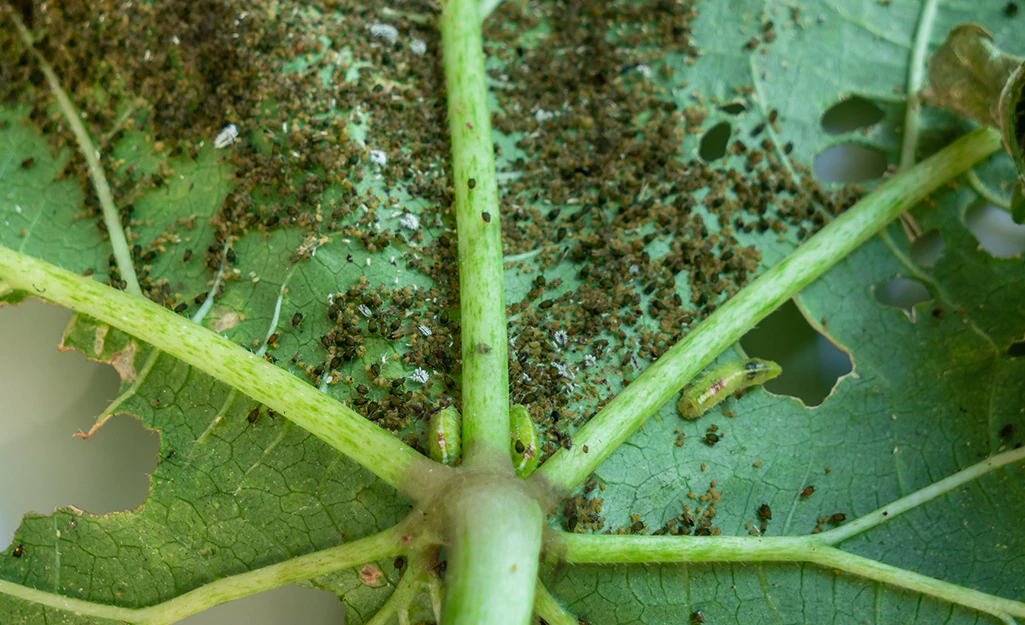
Early and Quick intervention is extremely helpful for full eradication in your houseplants, or outdoor plants. For this reason we have a list below of management methods. Make a habit of them to keep most pests controlled.
Study the life stages so you can figure out if they are thrips. But the good news is our pests management methods work for many pests. Learn the pest management techniques we outline below.
How to prevent Thrips from coming into your home.
These pests can be found in your outdoor garden, greenhouse or ornamental flowers and bushes. When they enter your home they can also infest houseplants.
We bring Thrips into our homes with garden produce or home cut flowers. Exercise care so you don’t cause a Thrip infection in your houseplants from your own yard. They can even hop on your cloths and travel indoors.
You can also introduce Thrips with new houseplants. Commercial plant shops and nurseries often have pests like thrips.
The Contented Plant
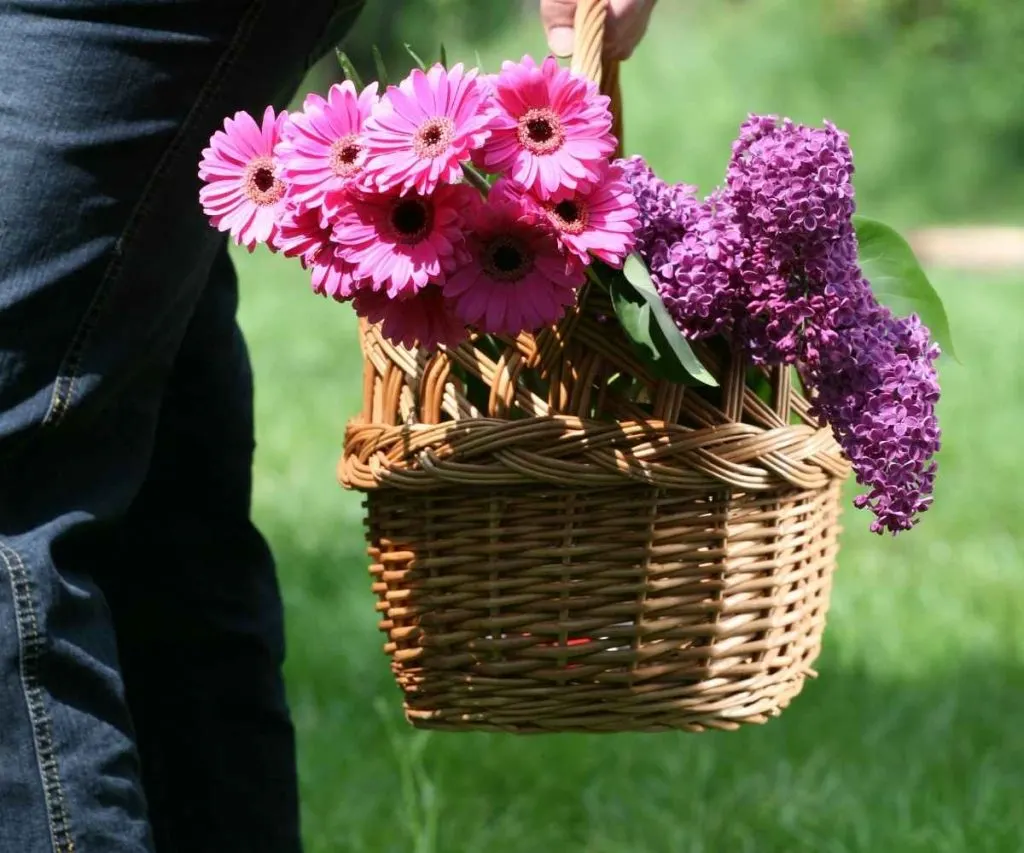
How To Safely Dispose Of Infested HousePlants:
If you see a LOT of pest damage and want to get rid of the plant rather than treat it, here’s the proper way to do it.
- Take the whole plant and set it in an airtight garbage bag.
- Seal the bag.
- Throw it into the garbage OUTSIDE.
- Do NOT throw a plant live with pests into your compost pile or anywhere they can continue their life cycle.
- Be sure to sterilize the home surfaces you and the plant came in contact with.
- Any other houseplants grouped together with the affected one should also be checked for pests and sprayed with a neem oil insecticidal spray.
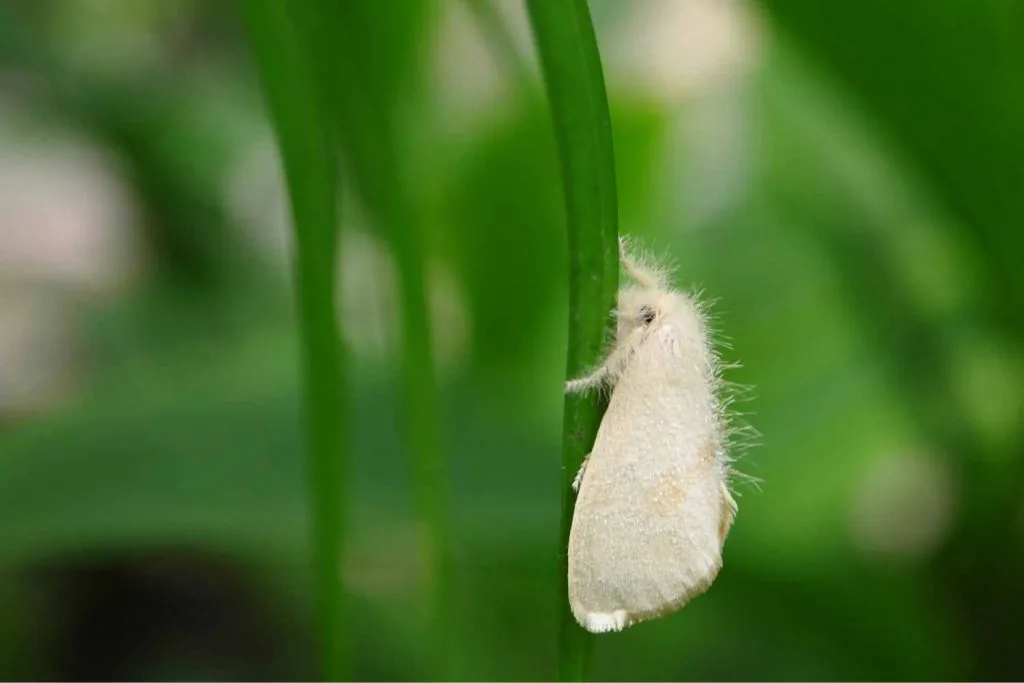
How to Keep Pests outside:
- Any new houseplants should be checked before purchase for plant pests.
- Quarantine all newly purchased houseplants from other plants at least a month.
- Plant pests can travel indoors on your cloths and even catch a breeze and fly into your home.
- Many pests such as thrips spider mites, whiteflies, aphids and mealybugs live on your outdoor plants and may get a foothold on your Indoor Plants. They come in on the wind, Cut outdoor flowers, and garden produce.
- Herder ants will also bring any honeydew producing pest indoors to set up house if they can. If you see an ant in your house or on a plant pay attention to what it is doing.
Identify bugs on your plant by placing a piece of white paper under your plant. Now shake the leaves. The bugs will fall on the paper so you can see them more easily.
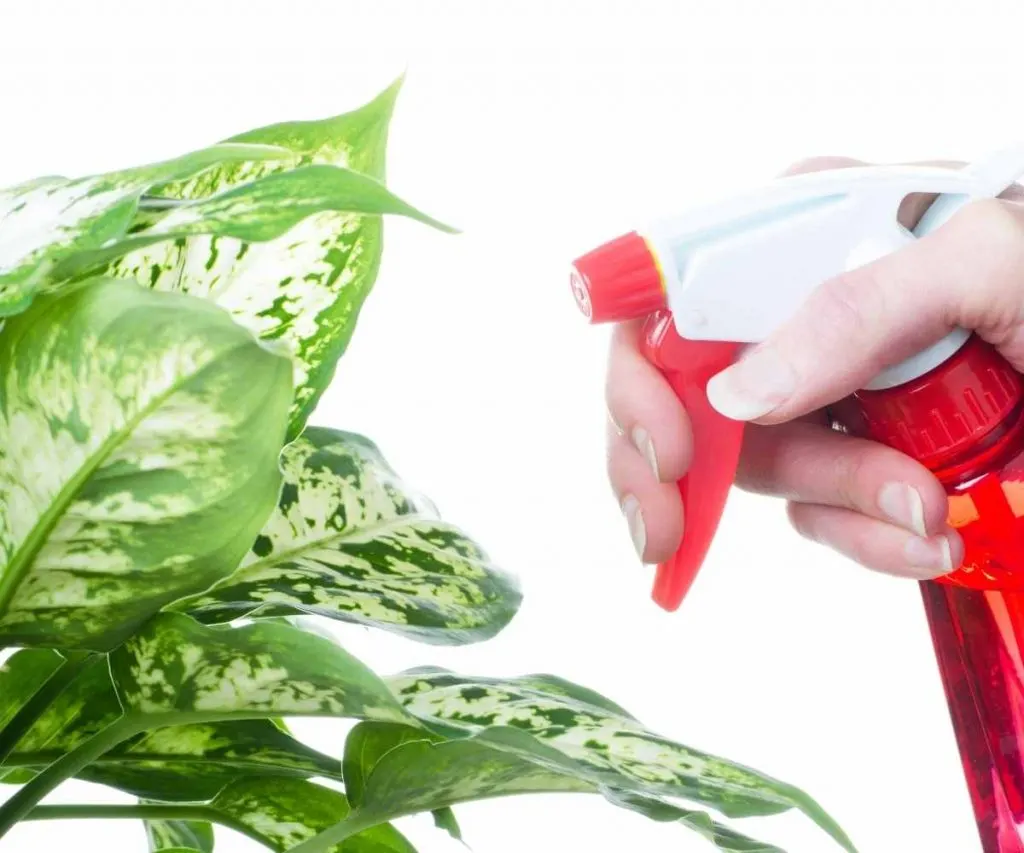
How To Safely Dispose Of Infested HousePlants:
If you see a LOT of pest damage and want to get rid of the plant rather than treat it, here’s the proper way to do it.
- Take the whole plant and set it in an airtight garbage bag.
- Seal the bag.
- Throw it into the garbage OUTSIDE.
- Do NOT throw a plant live with pests into your compost pile or anywhere they can continue their life cycle.
- Be sure to sterilize the home surfaces you and the plant came in contact with.
- Any other houseplants grouped together with the affected one should also be checked for pests and sprayed with a neem oil insecticidal spray.
Thrips Eradication and Management Methods:
You may see only one plant with thrips at first. Be sure to check every one of your houseplants and treat any with signs of thrips.
Thrips Eradication
When you first spot Thrips or Thrip damage on your houseplant.
- Wash the thrips off the leaves and stem of the plant. Use a strong spray of water if the plant will fit in your sink or use the patio hose if the hose water is not too cold. Otherwise use a saturated but wrung out cloth in water and neem oil.
- Follow the water spraying with a cloth saturated in neem oil solution. Be sure you get off all the bugs, eggs and larval stages. Also clean off the black fecal spots.
- To help reduce the spread of diseases do one plant at a time. Use a new cloth for every plant and wash your hands between plants.
Insecticidal Sprays:
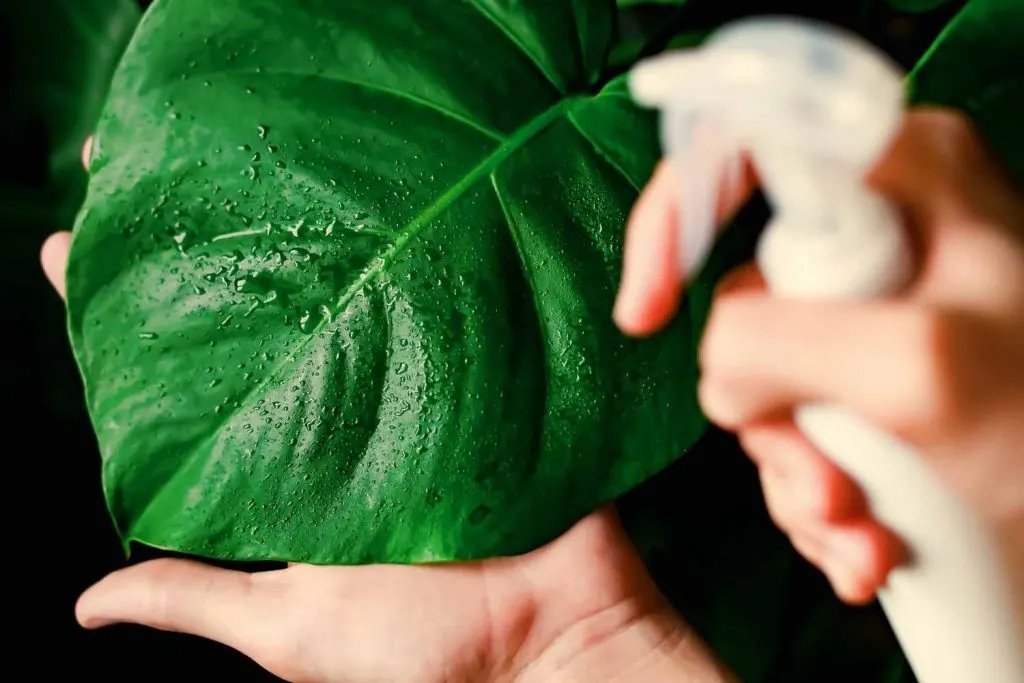
- Once you have ALL signs of the thrips washed off the plant leaves spray the plant thoroughly with an insecticidal soap spray. Spray under and over the leaves, leaf furls, emerging leave cracks and intersections.
- Look for any bugs you missed and kill them.
Pruning damaged leaves.
- Take stock of your plant. Where did the thrips damage it? You can cut off badly damaged leaves if there are only a few with a sterile blade, scissors or pruner.
- Deformed leaves and stem should be pruned if possible as they may harbor thrip eggs.
- If your plant leaves are very delicate and sensitive some soaps my burn the leaves. In that case. rinse the plant with water after applying the spray.
Repeat the treatment every three days:
- Repeat the insecticidal soap spraying as directed by our recipe or on the label of the product you are using.
- We also suggest you add a sticky trap to your affected plants pot. This will help you see if there are other thrip adults around your plant. If so, do not stop the treatments of spraying and inspecting the plant until you are sure they are gone in all life stages.
And..For yet another month after intensely treating thrips to complete eradication you need to closely monitor your plant leaves to ensure Thrips have not managed to survive your treatments. Or repopulate from another source.
Long Term Pest management:
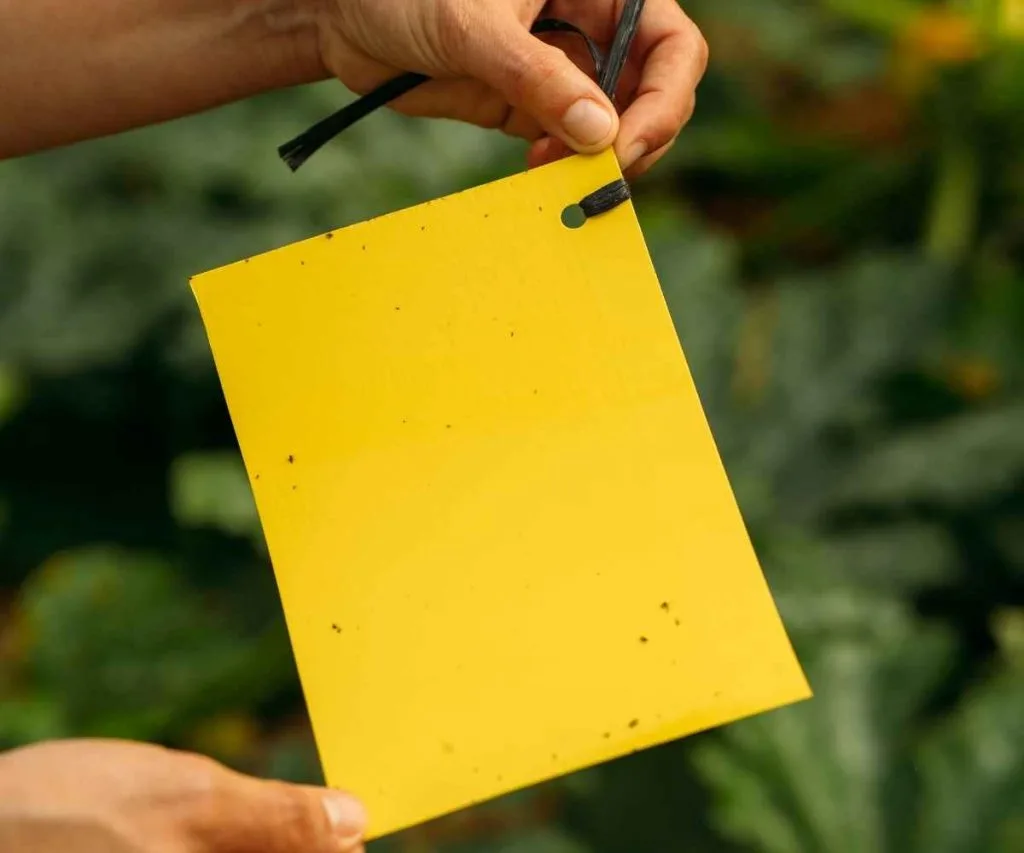
- sticky traps placed in your plant pots will catch whatever bugs fly around your plants. Thrips are easiest to spot and identify on sticky traps for early intervention.
- Leaf washing with neem oil. We call this a plant spa day. Use a solution of neem oil and water to do a leaf washing of your houseplants on a monthly schedule. Check all your plant leaves for eggs, insects and leaf damage.
- Wash the leaves well with a soft cloth to get rid of pests, help your leaves breathe better and look better.
- Follow up your leaf washing with a neem oil spray if you see any signs of pest damage or bugs on the plants. Spray leaf intersections, top and bottoms. And the stems.
- Use an organic spray recipe like ours or You can Purchase an organic home safe spray like this one from Amazon.
- monitor your plants closely for pests when you water them-thrips build population quickly.
Purchase Homemade Insecticidal Soaps and Sticky Traps from Etsy Shops
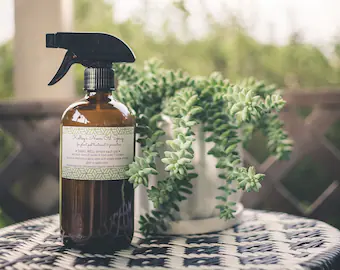
I Use the homemade neem oil insecticidal soap spray recipe below to kill Thrips on contact.
Homemade Insecticidal Soap Recipe
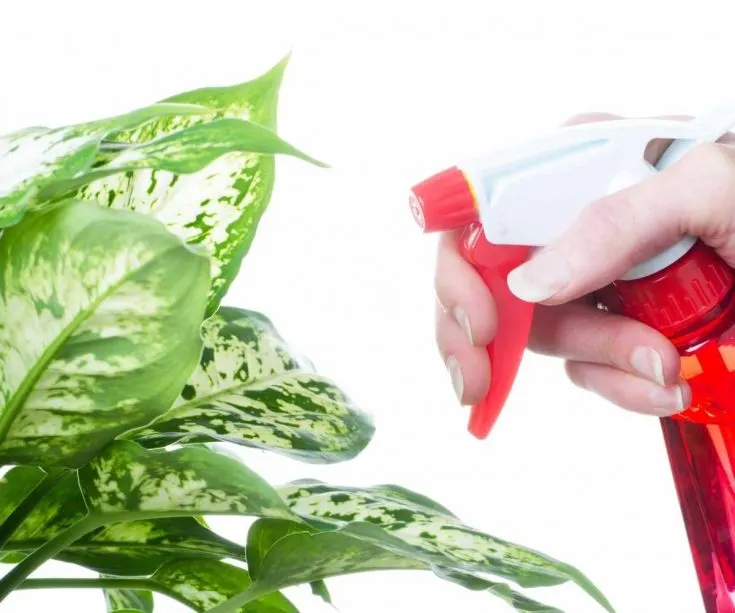
This Insecticidal Soap Spray Recipe with Neem oil is effective for spider mites, thrips, and soft-bodied insects on plants, such as aphids, young scales, whiteflies and mealybugs.
This recipe is Only a deterrent to caterpillars and beetle larvae. But this recipe will control boxelder bugs when they are still in the small nymph stages.
Materials
- 1 1/2 Tsp. Neem Oil
- 1/2 Teaspoon pure Castile liquid dish soap (or other organic liquid soap)]
- 1 quart water-soft or average hard water for best results.
- OPTIONAL:
- A few added drops of lavender, peppermint, or orange oil
Instructions
- mix the water, neem oil and soap into a solution.
- Pour solution into the spray bottle.
- spray on the affected plant leaves on the top and bottom.
- Also spray stems, intersections and buds of flowers.
- Leave the solution on the plants overnight.
- Spray the plants with water after 12 hours or so to rinse the leaves and remove dead pests.
- Reapply as needed. To interrupt the pest life cycle spray every three days for two weeks.
Although the basic recipe will work as described you may wish to enhance your formula by adding
A few added drops of lavender, peppermint, or orange oil in this recipe will help repel pests and smells great!
Notes
Sensitivity of Plants:
We do NOT recommend liquid dish soap DETERGENTS such as Dawn for this recipe. They contain harsh chemicals that can harm the surface of the plant leaves.
If you find this recipe is too harsh and burns your plants. Cut the soap amount in half or follow this spray with an immediate spray of plain water to protect your plant leaves. Also sensitive plants like ferns, succulents, azaleas and waxy leaved plants may be harmed by this spray.
Water Hardness matters:
This recipe is most effective with average to soft water. A hard water will yield a less effective insecticidal spray recipe and can leave soap scum on your plant leaves.
How to use this Spray:
- DIY Organic Insecticidal Soap Recipe works on contact which means it must coat the insect to kill it.
- This spray has No residual effect and must be applied several times at weekly intervals for best control. Although neem oil has some lasting impact on insects most of the effectiveness of this spray is by direct contact.
- Spray the entire plant with special focus on those areas of your plant where you can find the bugs.
- Spray in the morning or evening in cooler temperatures and when plants are shaded. You want the spray to last. Once it dries the spray is ineffective.
Go to our Homemade Food Junkie article For more on this recipe
The cost of this recipe is determined by which soap you use and if you have to purchase a spray bottle.
This insecticidal soap is not effective on fungus gnats. Read this article on how to kill and manage Fungus Gnats
Follow Us:
Find us on YouTube, Instagram , Pinterest and TikTok! We love to Plant chat. We also comment, like and occasionally share your content to our daily stories. We’d love to see your plants. Share your joy in your houseplants. Happy Planting!
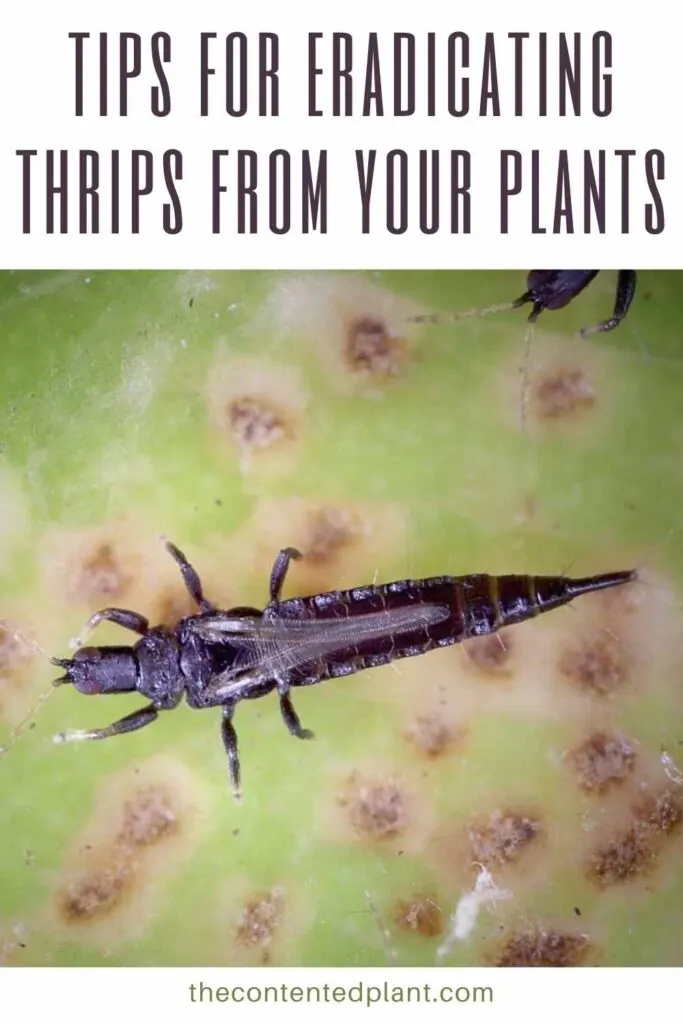

How to get rid of MealyBugs - The Contented Plant
Wednesday 29th of June 2022
[…] Spider mites, thrips and aphids, Mealy bugs will attack foliage, stems and flowers on […]
What are the Best Practices to Get Rid of Thrips on Houseplants? - Naturallist
Sunday 6th of February 2022
[…] Yellow sticky traps to monitor thrips on houseplantsCredit: The Contented Plant […]
How to Get Rid of Spider Mites on Plants - The Contented Plant
Thursday 9th of September 2021
[…] mites are sucking insects like Thrips, Aphids and Mealybugs. They attach themselves to plant cells and suck out the juices. The leaf cell […]